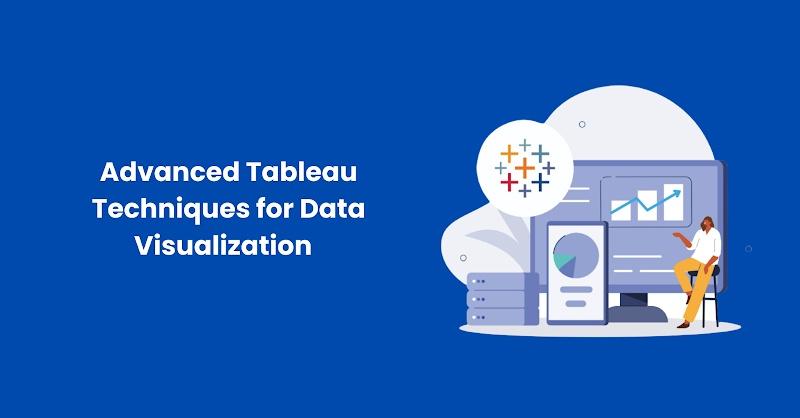Tableau is a powerful tool for professionals looking to turn unstructured data into insightful information. You’ve already made a big step towards becoming an expert in data visualisation if you started your Tableau adventure, possibly through a thorough Tableau Course or in preparation for Tableau Interview Questions and Answers. But Tableau’s strength goes beyond simply the fundamentals. This blog will explore sophisticated Tableau methods that can greatly improve your data visualisation abilities.
The Power of Tableau
Let’s quickly go through the reasons why Tableau is essential for data workers before diving into advanced Tableau skills. Tableau is a market-leading business intelligence and data visualisation platform that enables users to build shareable and interactive dashboards. Novice and seasoned data analysts may use it because of its simple drag-and-drop interface. A good foundation in Tableau, frequently achieved through Tableau training, is a stepping stone to success in data analytics.
Advanced Tableau Techniques for Data Visualization
Below are the advanced tableau techniques for data visualization.
LOD Expressions (Level of Detail)
With Tableau’s amount of Detail (LOD) expressions, you may regulate the amount of detail in your calculations without regard to the level of visualisation. For instance, you may present statistics at the product level while computing totals at the customer level. Mastering LOD expressions is essential for addressing difficult analytical issues and wowing interviewers with your advanced abilities.
Parameter Actions
There are countless opportunities for interaction when using parameter actions, which let users adjust parameters dynamically based on user inputs. Through parameter actions, you may make dynamic filters, highlight certain data points, or even power complicated computations. You may improve the usability and engagement of your Tableau visualisations by knowing how to employ parameter actions.
Custom Geocoding
Although Tableau has built-in global mapping features, you might occasionally need to deal with bespoke geocoding for certain location data. Knowing how to import and use custom geocoding files may be helpful when working with non-standard geographic data.
Set Actions
Tableau’s set actions allow you to build dynamic sets depending on user interactions. Users may, for instance, choose particular data points and instantly construct sets that can be used for additional research or visualisation. You may create more engaging dashboards that enable users to examine data uniquely by better understanding specified activities.
Data Blending and Data Source Filters
Multiple sources of data are common. Using Tableau’s data blending and source filter capabilities, you can easily merge and filter data from many sources into a single visualisation. This ability is very useful when merging data from different databases or systems.
Advanced Calculations
You’ll become a Tableau wizard if you can master complex calculations, including table calculations, window functions, and nested calculations. You may manipulate complicated data using these calculations to produce smart visualisations. To utilise the full potential of these strategies, practice and comprehension are essential.
Advanced Chart Types
Basic charts are necessary, but mastering more complex chart types like Pareto charts, bullet graphs, Sankey diagrams, and tiny multiples can help you present your data more expertly. These diagrams are frequently used to more effectively communicate complicated information.
Preparing for Tableau Interviews
As you go out on your journey to master advanced Tableau techniques, it is important to be well-prepared for Tableau interviews. You should practise the following Tableau interview questions:
- What are Tableau’s several join types, and when would each be used?
- Describe the distinctions between a measure and a dimension in Tableau.
- How does Tableau handle missing data?
- What benefits can data extraction in Tableau offer?
- Can you give an example of utilising dual-axis charts in Tableau and describe the principle behind them?
- What does Tableau’s Page Shelf serve, and how can it be applied to improve visualisations?
- What procedures must be followed to create a calculated field in Tableau?
- How may a slow-loading Tableau dashboard’s speed be improved?
- Describe the differences between Tableau’s context filters and standard filters.
- What advantages do Tableau Prep’s data preparation procedures offer?
Instead of memorising the answers, you may master Tableau Interview Questions by understanding the underlying concepts and applying your knowledge to practical scenarios. Practise problem-solving and visualising techniques while using complex ways to boost your confidence.
Conclusion
It’s critical to follow developments. Learning advanced Tableau techniques can help you stand out from the competition in Tableau interviews and enhance your data visualisation skills. Before exploring the more complex capabilities of this robust tool, think about taking a Tableau course to grasp the fundamentals. With diligence and practice, you’ll be well on your way to being a Tableau expert and in-demand data analyst in today’s data-driven world. So go to work, study Tableau’s sophisticated features, and be successful with your data visualisation projects.
